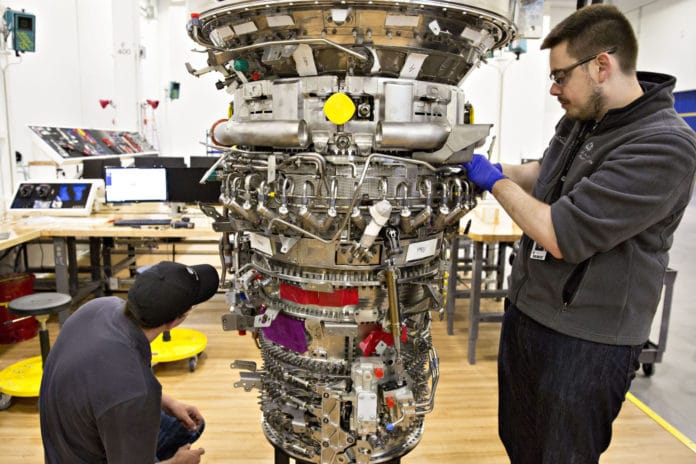Manufacturing unexpectedly expanded at a faster pace in May, helped by an increase in orders that signals U.S. factories are rebounding from an early-2016 slump.
The Institute for Supply Management’s index climbed to 51.3 from 50.8 in April, figures from the Tempe, Arizona-based group showed Wednesday. The median forecast in a Bloomberg survey of 81 economists called for 50.3. Readings greater than 50 indicate growth.
Factories are using a pickup in bookings from the United States and abroad to help trim stockpiles, laying the ground for bigger gains in production later in the year. The recent pickup in oil prices also will probably help stem the slump among energy producers that has contributed to weak business investment.
“Manufacturing will be on a slow, gradual path of improvement,” Sam Bullard, a senior economist at Wells Fargo Securities in Charlotte, North Carolina, said before the report. “Hopefully, we’re in a stabilization process in energy and mining.”
Estimates for the manufacturing index in the Bloomberg survey ranged from 49 to 52, according to the Bloomberg survey of 80 economists.
The new orders gauge was little changed at 55.7 compared with 55.8 in April. A measure of production cooled to 52.6 from 54.2.
One weak spot was the factory employment measure, which held at 49.2, indicating manufacturers trimmed payrolls last month.
In other signs that the industry is turning around, the index of supplier deliveries jumped to 54.1, the highest level since December 2014, from 49.1. A reading greater than 50 means shipments slowed, which often happens when suppliers have trouble keeping up with demand.
The ISM’s gauge of factory inventories fell to 45 from 45.5. The index has been lower than 50 for almost a year as producers trim the amount of goods on hand.
The report also showed the headwind from sluggish overseas markets may be dissipating. The index of export orders held at 52.5 in May, marking the third straight month demand from abroad has grown.
Manufacturers also are seeing a pickup in price pressures. The index of prices paid jumped to 63.5, the highest level since June 2011, from the previous month’s 59.
Meanwhile, Texas factory activity declines
Texas factory activity declined in May after two months of increases, according to the Federal Reserve Bank of Dallas’ Texas Manufacturing Outlook Survey.
The production index—a key measure of state manufacturing conditions—fell from 5.8 in April to –13.1 in May, hitting its lowest reading in a year.
Positive readings in the survey generally indicate expansion of factory activity, while readings below zero generally indicate contraction.
“We saw some hopeful signs of a rebound in manufacturing activity the last couple of months, but the gloomy May report suggests that weakness resumed,” said Emily Kerr, Dallas Fed business economist.
Other indexes of current manufacturing activity also reflected contraction this month. The new orders index fell more than 20 points to –14.9 after pushing into positive territory last month. The growth rate of orders index has remained negative since late 2014 and fell to –14.7 in May after climbing to near zero in April. The capacity utilization and shipments indexes returned to negative territory after two months of positive readings, coming in at yearlong lows of –11.0 and –11.5, respectively.
“It’s a difficult time for many manufacturers, with contraction in the energy sector rippling through to some customers, quite a bit of uncertainty about demand, and other headwinds,” Kerr said. “Hopefully the recent rise in oil prices, if sustained, will provide some relief from some of these headwinds in coming months.”
Perceptions of broader business conditions were more pessimistic this month. The general business activity index declined from –13.9 to –20.8. The company outlook index fell 10 points to –16.1 in May.
Latest readings on employment and workweek length indicated a fifth consecutive month of contraction in May. The employment index moved down to –6.7, while the hours worked index posted a double-digit decline from its April reading, coming in at –11.8.
Expectations regarding future business conditions were mixed in May. The index of future general business activity fell 2 points to –1.8, while the index for future company outlook remained positive but moved down to 4.4 this month. Indexes for future manufacturing activity fell but remained solidly positive.
Texas produces more than 11 percent of total manufactured goods in the United States, ranking second behind California in factory production.
The Dallas Fed conducts the Texas Manufacturing Outlook Survey monthly to obtain a timely assessment of the state’s factory activity. – Staff reports






